Designers: Zach Evans, Isaac Haniff and Lindsay Stark
INTRODUCTION
Continuous passive motion (CPM) is the application of controlled movement to a joint that helps speed up recovery time following a serious injury, as well as maintain joint health for longer [1]. It is a viable and seldom-used method to supplement a knee rehabilitation program. This paper focuses on CPM usage after anterior cruciate ligament (ACL) injury.
Every year, approximately 250,000 athletes tear their ACL in the knee [2]. The ACL is a flexible band of tissue connecting the femur and tibia that can be repaired surgically with a 90% success rate [3,4]. However, damage to the underlying articular cartilage – a slick, friction-reducing tissue necessary for joint mobility and stability – cannot be repaired [3]. This lingering damage leads to a 6x greater risk of reinjuring the knee than someone who has never torn their ACL [5]. In addition, the process of recovering from ACL injury involves extensive and lengthy rehabilitation and prevents athletes from returning to their sport for up to a year [6].
CPM of the knee involves extending and flexing the leg repeatedly without causing fatigue to the surrounding leg muscles [1,7,8]. This process increases the range of motion of the injured knee and reduces swelling and stiffness [7,8]. The continual motion also allows more nutrients to circulate through the joint, promoting the healing of damaged tissue [7,8]. The benefits of CPM were documented in a 1980 study that found that articular cartilage damage was repaired in 44% of rabbits that underwent CPM, while immobilization only repaired 3%, after three weeks of treatment [9]. Therefore, CPM can be used to effectively rehabilitate athletes with ACL injuries in order to strengthen the knee and prevent future injuries.
Currently, CPM is provided through a device that requires the user to lie down on a bed or table with the injured leg strapped into the machine. Although the machine adequately provides passive motion to the knee, it is uncomfortable and debilitating for the user to lie down for hours at a time [10]. Further, these devices are inconvenient to use without extensive instruction on how to setup and program the device [10]. CPM devices are also expensive – ranging from $2000-$6000 – and are not covered by insurance companies for more than a couple weeks, which is not a sufficient amount of time for articular cartilage damage to be repaired [1]. Therefore, there is a significant need for a more accessible, cost-effective CPM device that can be used by athletes recovering from ACL injury in their choice of setting.
The goal of this project was to design a CPM device that is operated by people with ACL injuries in order to expedite their recovery time and improve their quality of healing. The device provides up to 90° of knee bending motion by stabilizing the knee within the device and passively flexing and extending the leg. It can perform CPM on either the right leg, left leg, or both legs. The device can be used comfortably in an upright-seated position and is accessible for injured users. It also addresses the main limitations in current machines by decreasing the cost and improving the maneuverability of the device. In addition, users are easily able to operate the device after minimal instruction, and can adjust the desired range of motion for each leg.
SUMMARY OF IMPACT
Dr. Russel Zelko, a retired orthopedic surgeon, requested that we design a device that could further the research and understanding of continuous passive motion. When we presented the device to Dr. Zelko, he remarked, “I am really proud and grateful to you guys for the work you have done on this project. I really think it has some great possibilities. There are really no practical devices out there that can continuously move joints and this can eventually be expanded to move the ankle, elbow, hip, wrist, and even stiff fingers. Thank you for all your efforts.”
TECHNICAL DESCRIPTION
Our CPM device is a powered mechanical system that moves the knee joint by extending and flexing the leg. It consists of a chair with a cushioned seat and leg supports. The design of the device allows the user to be seated upright and able to perform more daily tasks while receiving treatment, as well as gives a larger variety of choices for location of use. The main components of the device are the chair, the bracket system, the motor, and the electronics. Prior to use, the degree of motion of the legs can be adjusted. The motion produced by the device is consistent with current CPM device motion; however, there is no hip movement involved. This is an improvement, especially for users who have limited hip mobility.
- The chair
The user sits on the cushioned seat of the chair and positions his/her legs comfortably on the leg supports. When the device is on, the leg supports move and provide CPM. The underlying structure is the IKEA Kaustby solid pine chair. The seat is covered in Isotonic® memory foam and covered in expanded vinyl. The memory foam cushions and contours to the user’s legs for stable placement on the device, and the vinyl can be easily cleaned with wipes after use. The leg supports are ½ inch thick oak plywood covered in the same memory foam and vinyl. They are attached to the seat of the chair using spring hinges, which are biased for the leg supports to rotate upwards. This helps the device push the user’s legs up during CPM. In addition, the leg support design allows our device to be used by people that have different leg lengths. Our seat and leg support design addresses the need for the user to be seated upright.
- The bracket system
The bracket system we adopted for our design is analogous to the mechanism used in reclining chairs that rotates the footrest out. It uses two 11-inch steel bars for each leg support – one connected to the bottom of the seat, and one connected to the bottom of the leg support. These metal bars are connected with binding posts that prevent lateral movement but allow the bars to pivot relative to each other. This mechanism creates the rotational motion when the device is activated. The positioning of the bracket system and method of achieving CPM allows the device to be easily sat upon and accessed by users who are injured.
- The motor
The motor is a linear actuator that pushes on the bracket system to power the CPM motion. It has a 4-inch stroke length that pushes with up to 225-lb of force; this stroke length and pushing force allows the device to flex and extend a human leg a full 90 degrees, and support a range of different leg weights. The back of the motor attaches to the bottom of the seat using modified mounting brackets. Likewise, the front of the motor attaches to one of the steel bars in the bracket system through a modified mounting bracket. These mounting brackets allow rotation, as the angle between the motor and the arm changes as the device moves. The use of a motor allows the device to supply automatic CPM.
- The electronics
The electronic circuitry is secured in an acrylic housing connected to the side of the seat. The system is powered by a lithium-ion rechargeable battery that lasts for up to 6 hours of CPM and allows the user to start the device even when not near an electrical outlet. The circuitry consists of an Arduino microcontroller and motor shield, LCD monitor and encoder button, and a unique infrared emitter and detector system. Together, these drive the linear actuator to provide the device’s automatic motion and controllable angle range. The microcontroller regulates the motion of the motor and the motor shield allows the motor to actuate in both directions. The LCD monitor displays the user settings when the device is turned on and allows the user to choose starting angle, stopping angle, and which leg to perform CPM on. The encoder button allows the user to scroll through and select their preferred setting. Finally, the emitter is attached to the body of the motor, while the detector is attached to the end of the motor stroke; together, they tell the circuitry how much the motor has extended or retracted, and allow the calibration of the device to correspond to the angle of rotation of the user’s leg. This electronic control system includes an emergency stop on the battery, which shuts off the electronic components immediately. This circuitry is the simplest and most effective way to regulate the motion of the device.
REFERENCES
- R. Zelko. (2015, Oct.). Personal Communication.
- UNC Injury Prevention Research Center. (n.d.). Centers for Disease Control. [Online]. Available: http://www.cdc.gov/injury/erpo/icrc/2009/1-R49-CE001495-01.html. Accessed Oct. 9, 2015.
- PICTURE REFERENCE
- Anterior Cruciate Ligament Injury (ACL). (2015). University of California, San Francisco [Online]. Available: http://orthosurg.ucsf.edu/patient-care/divisions/sports-medicine/conditions/knee/anterior-cruciate-ligament-injury-acl/. Accessed Nov. 28, 2015.
- Paterno MV. Paper #2. Presented at the American Orthopaedic Society for Sports Medicine Annual Meeting. July 11-14, 2013. Chicago.
- T. O Souryal. (n.d.) ACL Injury, ACL Tear, ACL Surgery. Texas Sports Medicine and Orthopaedic Group [Online]. Available: http://www.txsportsmed.com/acl.php. Accessed Nov. 24, 2015.
- R.B. Salter. (2004). Continuous Passive Motion: From Origination to Research to Clinical Applications. The Journal of Rheumatology [Online]. Available: https://www.jrheum.com/subscribers/04/11/2104.html. Accessed Nov. 15, 2015.
- D. Romanelli, D.S. Watanabe, B.R. Mandelbaum. (2008). Articular Cartilage Injuries [Online]. Available: https://www.sportsmed.org/uploadedFiles/Content/Patient/Sports_Tips/ST%20Articular%20Cartilage%2008.pdf. Accessed Nov. 15, 2015.
- R. B. Salter, D. F. Simmonds, B. W. Malcolm, et al. (1980, Dec.). The biological effect of continuous passive motion on the healing of full-thickness defects in articular cartilage. An experimental investigation in the rabbit. J Bone Joint Surg Am [Online]. 62(8). Available: http://www.ncbi.nlm.nih.gov/pubmed/7440603. Accessed Nov. 15, 2015.
- S. Oliaro. (2015, Oct.). Personal Communication.

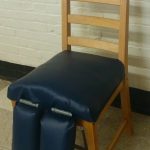
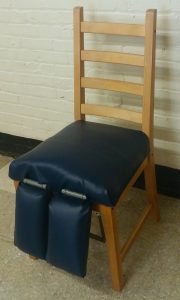
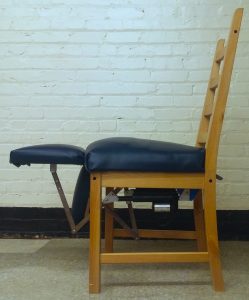
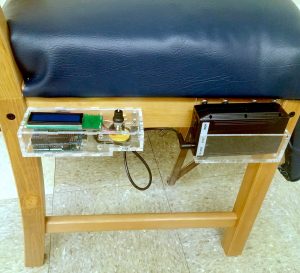
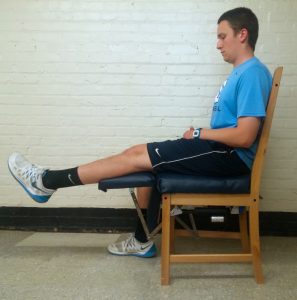
University Operator: (919) 962-2211 | © 2024 The University of North Carolina at Chapel Hill |